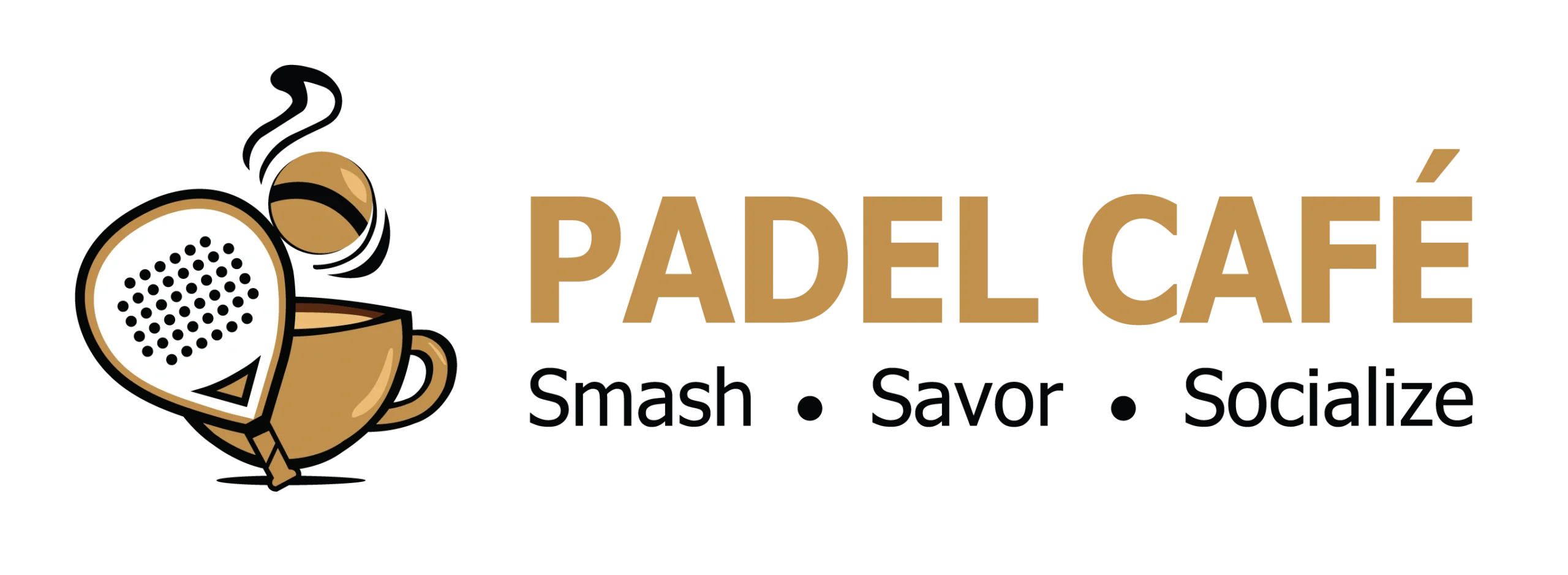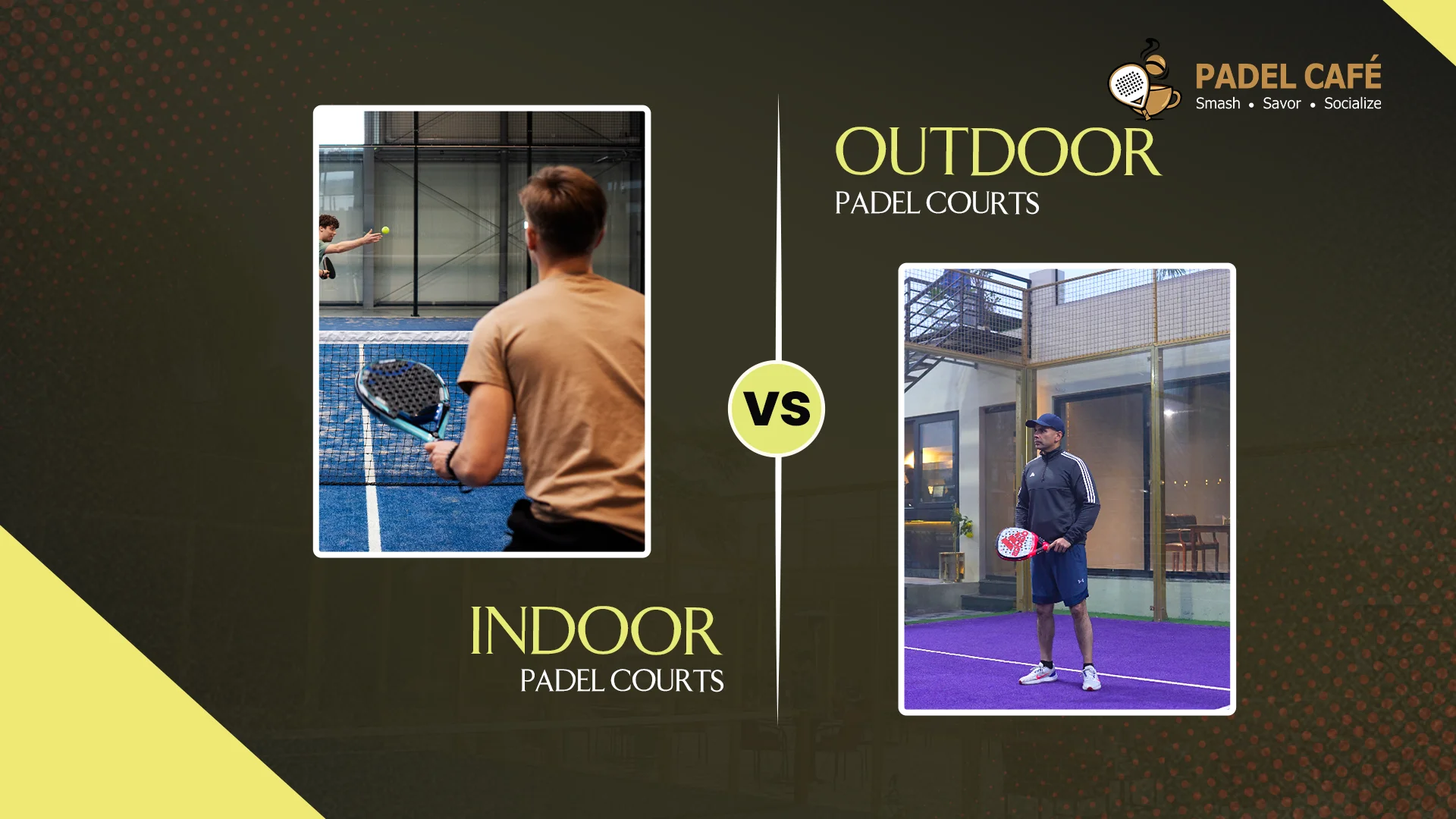Padel, rings many bells, right? It’s another racket-based game that’s rapidly gaining popularity across the globe. Like tennis and squash, this game is also a court game, fostering some major court differences from the games mentioned earlier. Padel courts are smaller than those of tennis and larger than squash’s. The tempered glass walls in Padel are an essential part of the game, completing the game’s court. However, just like tennis and squash, Padel courts are constructed both indoors and outdoors.
Now, the important question to ask is, “Indoor or outdoor, what court construction suits you best?” To best answer this question, let’s have a walkthrough of the pros and cons of each court location.
Indoor Padel Courts vs Outdoor Padel Courts
Pros of Indoor Padel Courts
The following are the key benefits of indoor padel courts:
1. Controlled Weather
Consistent weather conditions are one of the greatest advantages of building the courts inside. Secure from the harsh outside environmental conditions, the indoor padel shields the players from adverse weather, such as extreme heat, cold, wind, light, etc. No inclement weather or any such sudden climatic emergency can put a stop to an ongoing padel game played indoors.
2. Consistent Playing Conditions
In continuation with the above point, an interior game of padel maintains consistency in playing conditions. The turf remains protected from weather harshes, and proper lighting and lack of wind keep the courts all-ready for an electrifying padel game at any time of the day. One can say that indoor courts are more resistant to wear and tear.
3. Less Distractions
A winning match is all about skill, strategy, and focus, and a game played in an enclosed space ensures just the same. With less background noise of cars, passers-by, and other interruptions, players enjoy a focused game and properly savor the thrill of every shot. It is particularly helpful in practice sessions when maximum concentration is required to master the game’s rules and skills.
4. Better Visibility
The lighting system in an enclosed space offers better visibility than the exterior. High-quality lights ensure enhanced lighting and proper visibility. No matter the type of light intensity outside, players can continue to play without compromising the quality of their gameplay.
Pros of Outdoor Padel Courts
Let’s move on to exploring the advantages of playing Padel in an open space:
1. Natural Freshness
Fresh air and natural light instill an unmatched energy in players. Ample air to breathe, natural light, and a pleasant breeze all open the players’ minds. The scenic views and cityscapes all add to the padel-playing experience. The players feel naturally reenergized, with a strengthened connection with nature.
2. Sense of Freedom
Although fun, indoor padel is like being confined in one space, which is not the case in outdoor gameplay. The blue sky above and the surrounding greenery make everything look increasingly spacious. Moreover, one can even design courts that blend well with the surrounding landscapes, creating an aesthetic appeal for the place.
3. Better Ventilation
The openness of the outdoors and lack of confinement offers enhanced ventilation. One does not feel stuffed or suffocated after a match, as might happen in a game played inside. Moreover, ample air to breathe and occasional breezes keep the place ventilated at all times.
4. Enhanced Socialization
Outdoor padel courts are social hubs, promoting socialization and bridging communities. These are often situated in places such as clubs, sports complexes, and parks, which are buzzing with an interactive and welcoming atmosphere. So, after a match, the players can foster new connections, building the padel community.
Cons of Indoor Padel Courts
Where there are pros, there are cons. Let’s have a look at some of these:
1. Poor Ventilation
Not uncommon in indoor spaces, padel playing in enclosed spaces is often associated with poor ventilation. The windows are there, but heat and unpleasant odors accumulate more quickly. Moreover, in hot weather, the interiors can become increasingly hot. This leads to a depletion of the fresh air inside, leaving the players suffocated and out of breath.
2. Sense of Confinement
The interiors are often constructed based on fixed measurements. Although the game’s courts are built in compliance with international standards, the space’s closed construction induces a feeling of confinement in players. Moreover, it limits the possibility of playing high shots. It’s as if one enters a cage for a scheduled time.
3. Visual Fatigue from Artificial Lighting
True, the lighting inside a given space is proper, and every corner is bright and lit up. But there’s a catch! All of these are artificial lights, and their intensity can significantly impact sight. The lights are necessary in an indoor setting, and so their continuous intense rays and improper distribution can cause visual fatigue for the players.
4. Echoes Off the Walls
Although an enclosed space lacks distractions, it does have some disturbances, such as an echo. As stated earlier, the walls are part of this game. So, as different balls in different courts hit the wall, a consistent echo sounds in the court. This can sometimes cause the players to lose their focus and lose a winning match.
Cons of Outdoor Padel Courts
Now, let’s move on to exploring the cons of playing padel outdoors:
1. Susceptible to Weather-Related Disruptions
One of the greatest disadvantages of playing outdoor padel is the game’s dependency on weather conditions. Inclement weather conditions, such as wind, rain, lightning, humidity, cold, etc., often halt an ongoing game.
2. Unwanted Sun Glare
Depending on the time of year, the sun’s glare can bother players. Although it offers good visibility, the harmful glare can also affect players’ vision, focus, and overall performance.
3. More Maintenance Required
Due to harsh weather, outdoor Padel courts require proper maintenance. Rain, humidity, wind, and other elements can negatively affect the court’s overall appearance. Thus, regular maintenance efforts are required to ensure optimal functionality and safety.
Cost Comparison
Cost remains a significant factor to consider in the construction of padel courts. Here’s a brief cost analysis for both indoor and outdoor courts:
1. Construction and Maintenance Costs
Indoor court construction is understandably more costly than outdoor construction. Adequate roofing, flooring, and temperature control system installation require huge sums of money, adding to the overall construction budget. On the other hand, outdoor courts require fewer capital investments due to their simpler design and fewer requirements.
2. Booking Charges
When it comes to scheduling and booking court time, there is a price difference between courts constructed inside and outside. The former charges more to cover the higher operational and maintenance costs. The latter type, specifically in public parks, charges less and offers greater accessibility.
3. Maintenance Costs
Though less subjected to weather harshness, indoor courts still lead the race when it comes to maintenance costs. Ensuring optimal lighting, keeping the controlled environment the same at all times, and maintaining proper lighting all add to the overall capital needed. Outdoor courts do demand upkeep, but the issues to manage in this case are fewer, making their construction comparatively cost-effective.
Making the Decision: Indoor or Outdoor?
An understanding of the courts’ pros and cons helps a great deal in deciding on its construction, indoor or outdoor. Additionally, some other factors also play a role in this decision-making. These include:
- Climate: We have discussed how weather changes can affect the game. If your intended location often experiences inclement weather conditions, an indoor court sounds like a better way to go.
- Budget: Based on the cost analysis for the two court locations, the vote goes in favor of outdoor construction when we speak of the affordability of installation and maintenance.
- Player Preference: The customers are always the central focus. So, understand the playing preferences of the population in your area prior to deciding on court construction.
- Your Vision: It is also important to ensure that the court type aligns with your vision. You should consider how the court construction will incorporate your goals and scalability plans.
Summing Up
Padel is a unique game that offers a thrilling experience and socialization. The game’s courts are not restricted to exterior spaces. Even indoor court construction offers exciting perks and benefits, increasing the game’s appeal for players and visitors. The above article lists the pros and cons of each type of padel court construction. It will help you decide on which location to go to and offer a vibrant and interactive atmosphere to your visitors.



0 Comments